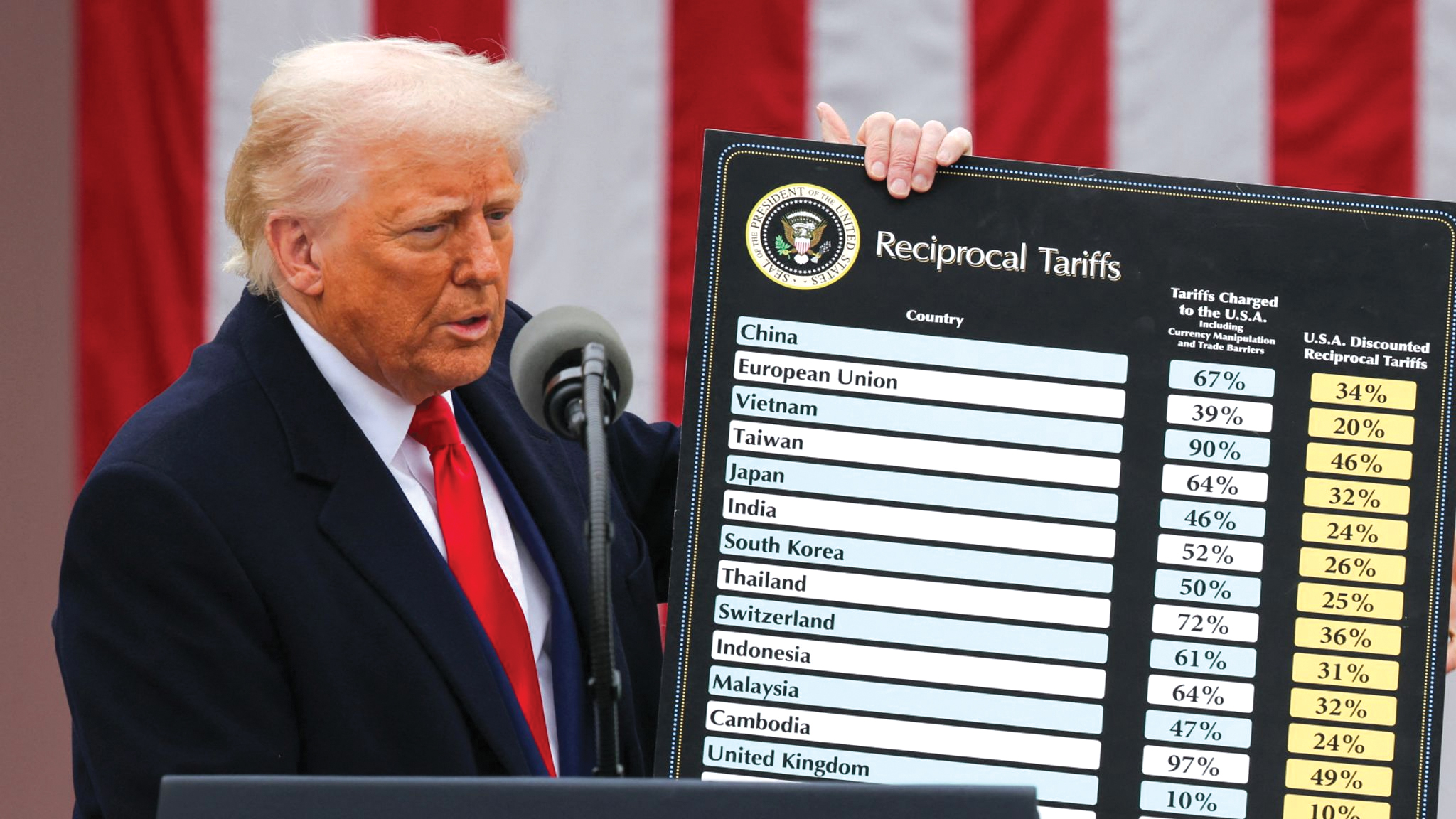President Trump’s announcement in April of sweeping tariffs – starting at a base rate of 10 per cent for all countries and escalating for China and specific product categories – triggered immediate turbulence across the global stock and bond markets.
Investors reacted sharply, with inflation fears propelling US Treasury yields higher by as much as 30 basis points on 10-year and 30-year bonds. Yet paradoxically, despite rising interest rates, the US dollar weakened dramatically, losing 10.5 per cent of its value since the start of the year – its worst first-half performance since 1973 – as recession concerns and a pivot toward safer havens, like gold and certain foreign currencies intensified.
In the aftermath, Moody’s issued a downgrade to the US credit rating, prompting the Trump administration to partially retract its approach, by announcing a three-month suspension of most proposed tariffs. This reversal, paired with robust US corporate earnings for the first quarter of the year, led to a rebound in equities, lifting the S&P 500 by 11 per cent at the close of the second quarter.
Meanwhile, international tensions contributed to uncertainty. Efforts by President Trump to negotiate peace between Russia and Ukraine bore no fruit, while a sudden 12-day conflict between Israel and Iran jolted energy markets and caused oil prices to surge, albeit temporarily, in line with the short duration of the military conflict.
In the US, fiscal concerns deepened with the July 4 legislation that expanded tax cuts favouring the high-income bracket; a move projected to inflate the national debt and widen fiscal deficits, further fuelling the concerns of Moody’s and other global rating agencies.
At the core of the controversy lies President Trump’s persistent friction with Federal Reserve Chairman Jerome Powell. The US president has publicly criticised Powell for keeping interest rates elevated, claiming the Fed’s stance is costing taxpayers “trillions” while stifling economic momentum.
President Trump’s desired trajectory appears to be aggressive rate cuts, regardless of persistent inflationary pressures. Reports have surfaced that President Trump considered removing Powell, even drafting a resignation letter and seeking counsel from Republican lawmakers on whether to proceed.
Though legal precedent makes such a dismissal difficult absent cause, President Trump’s public pressure, through threats, budget leverage and referrals, has cast a shadow over the Fed’s independence and stirred unease among analysts and investors.
Critics, including CEOs from the banking industry, worry that eroding the institutional autonomy of the Fed could destabilise inflation expectations and push long-term borrowing costs even higher.
This pattern of bold proclamations followed by strategic retreats has become so recurrent it earned its own acronym: Taco, which is short for “Trump Always Chickens Out.” Coined by Financial Times columnist Robert Armstrong, the term attempts to capture what many analysts view as the hallmark of President Trump’s economic and deal-making style: market-rattling threats that are later scaled back or abandoned, once their real-world consequences begin to unfold.
A number of traders have embraced the “Taco trade”, buying into market dips in anticipation of President Trump’s backpedaling. Though the president has dismissed the term as “nasty,” it has gained traction on Wall Street as shorthand for his erratic but recognisable maneuvering.
Tensions rose further with Trump’s latest announcement of additional tariffs: up to 40 per cent on imports from 21 countries and an extra 10 per cent on Brics nations, set to take effect on August 1. The move has sparked unease across global markets, intensifying an already volatile trade environment.
China is facing a deadline of August 12 to reach an agreement and negotiations have resumed in a climate of urgency and strain, further weighed down by distrust and unpredictability on both sides. Meanwhile, Beijing has issued warnings of potential retaliation against nations that exclude it from critical supply chains, further fuelling uncertainty in international economic relations.
Still, despite this volatile backdrop, the US stock market proved resilient in the second quarter of 2025, supported by encouraging macroeconomic indicators and strong earnings reports. Investors appear cautiously optimistic, anticipating a milder outcome than the administration’s rhetoric might suggest.
Nonetheless, persistent geopolitical instability, aggressive fiscal expansion and political pressure on monetary policy continue to fuel uncertainty. While some market participants remain confident, a chorus of analysts warns that the long-term ramifications of President Trump’s strategy may be underestimated. In such an environment, vigilance and close monitoring of new developments is imperative.
Andreas Charalambous and Omiros Pissarides are economists and the views they express are personal








Click here to change your cookie preferences